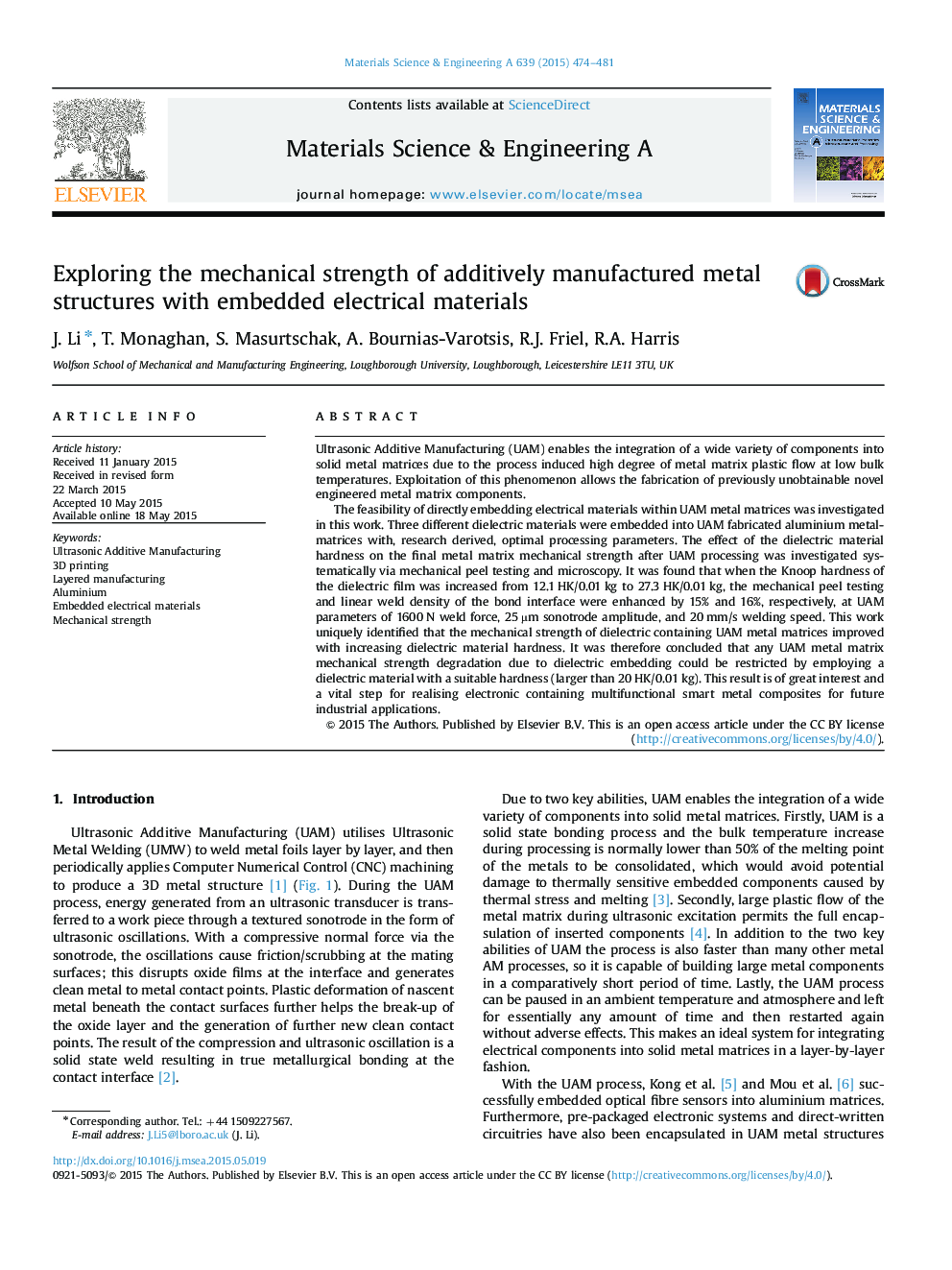| Article ID | Journal | Published Year | Pages | File Type |
|---|---|---|---|---|
| 7977812 | Materials Science and Engineering: A | 2015 | 8 Pages |
Abstract
The feasibility of directly embedding electrical materials within UAM metal matrices was investigated in this work. Three different dielectric materials were embedded into UAM fabricated aluminium metal-matrices with, research derived, optimal processing parameters. The effect of the dielectric material hardness on the final metal matrix mechanical strength after UAM processing was investigated systematically via mechanical peel testing and microscopy. It was found that when the Knoop hardness of the dielectric film was increased from 12.1 HK/0.01 kg to 27.3 HK/0.01 kg, the mechanical peel testing and linear weld density of the bond interface were enhanced by 15% and 16%, respectively, at UAM parameters of 1600 N weld force, 25 µm sonotrode amplitude, and 20 mm/s welding speed. This work uniquely identified that the mechanical strength of dielectric containing UAM metal matrices improved with increasing dielectric material hardness. It was therefore concluded that any UAM metal matrix mechanical strength degradation due to dielectric embedding could be restricted by employing a dielectric material with a suitable hardness (larger than 20 HK/0.01 kg). This result is of great interest and a vital step for realising electronic containing multifunctional smart metal composites for future industrial applications.
Keywords
Related Topics
Physical Sciences and Engineering
Materials Science
Materials Science (General)
Authors
J. Li, T. Monaghan, S. Masurtschak, A. Bournias-Varotsis, R.J. Friel, R.A. Harris,
